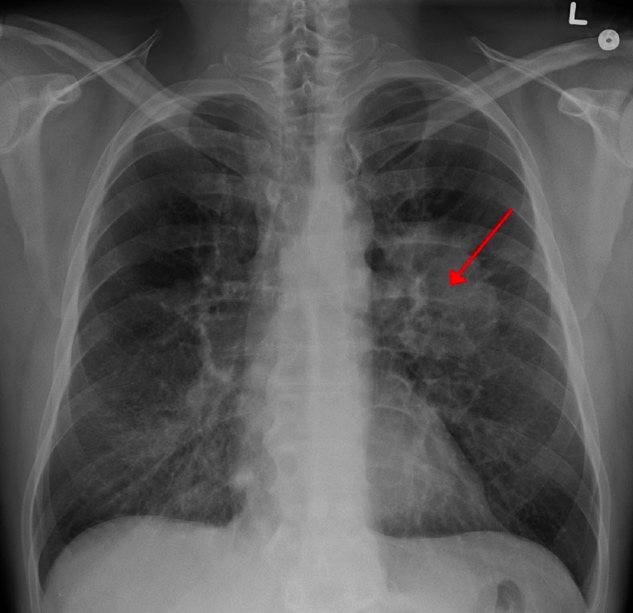Engineering Lung Cancer Cells for Self-destruction
Self-destruction is a novel immunotherapeutic strategy for exploiting cancer cells against themselves. This strategy uses various methods to engineer lung cancer cells to achieve cytokines overexpression and to assess the effect of self-destruction by different assays. Creative Biolabs offers state-of-the-art services for engineering the lung cancer cell lines for self-destruction that meet your specific tumor research needs.
Background of Lung Cancer
Lung cancer is a disease in which cells in the lung grow out of control. Lung cancers usually are divided into two main types, small cell lung cancer (SCLC) and non-small cell lung cancer (NSCLC) which include adenocarcinoma and squamous cell carcinoma. Different types of lung cancer cells have different treatments.
 Distributed under CC BY 3.0, from Wiki.
Distributed under CC BY 3.0, from Wiki.
✔10% to 15% of lung cancers
✔Grow and spread faster than NSCLC
✔Respond well to chemotherapy and radiation therapy
✔Return at some point
✔80% to 85% of lung cancers
✔Subtypes of NSCLC are adenocarcinoma, squamous cell carcinoma, and large cell carcinoma
Table.1 Types of NSCLC
|
Adenocarcinoma
|
Adenocarcinomas start in the cells that would normally secrete substances such as mucus. It is more common in women than in men, and it is more likely to occur in younger people than other types of lung cancer.
|
|
Squamous cell carcinoma
|
Squamous cell carcinomas start in squamous cells, which are flat cells that line the inside of the airways in the lungs. They are often linked to a history of smoking and tend to be found in the central part of the lungs, near the main airway (bronchus).
|
|
Large cell (undifferentiated) carcinoma
|
Large cell carcinoma can appear in any part of the lung. It tends to grow and spread quickly. A subtype of large cell carcinoma, known as large cell neuroendocrine carcinoma (LCNEC), is fast-growing cancer that is very similar to small cell lung cancer.
|
|
Other subtypes
|
Adenosquamous carcinoma and sarcomatoid carcinoma.
|
Main Cell Lines for Engineering in Lung Cancer Research
A549 is a common human NSCLC cell line, known to be KRAS mutant and EGFR wild type. It is one of the commonly used cell lines for a wide range of research applications.
H358 is a NSCLC cell line that was isolated from the bronchiole of a male patient with bronchioalveolar carcinoma, and can be used in cancer research. KRAS mutations are found in >25% of lung adenocarcinomas.
Our Services
Creative Biolabs has extensive experience in lung cancer cell models and lung cancer immunobiology. We offer a full-scale range of self-destruction services to meet your scientific needs. Below is a workflow of our engineering cancer cell for self-destruct strategy.
The human lung adenocarcinoma cell line, CL1, has been widely used to study the invasive capabilities or drug resistance of lung cancer cells.
The SW900 is a NSCLC cell line which initiated by A. Leibovitz in January 1975 from biopsy tissue of a squamous cell carcinoma. It originated in the lung of a 53-year-old male Caucasian.
 Fig.2 Workflow of engineering lung cancer cells for self-destruction.
Fig.2 Workflow of engineering lung cancer cells for self-destruction.
With a team of scientists who come from different research backgrounds, Creative Biolabs guides you all the way from project inception to high-quality results. For more cancer cell lines for self-destruction, please visit the unit of Engineering Cancer Cells for Self-destruction. If you have interest, please do not hesitate to contact us.
For Research Use Only | Not For Clinical Use



 Fig.2 Workflow of engineering lung cancer cells for self-destruction.
Fig.2 Workflow of engineering lung cancer cells for self-destruction.
 Download our brochure
Download our brochure

